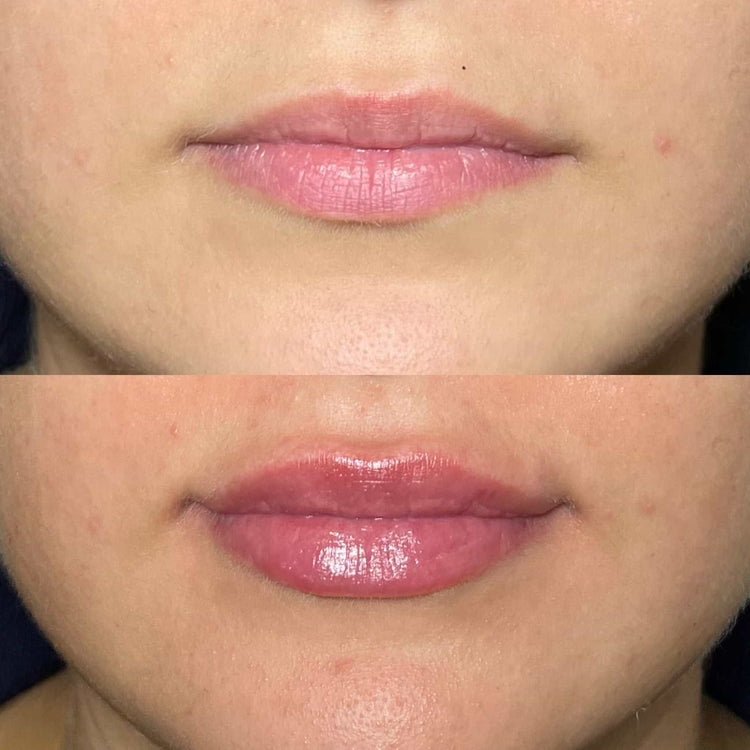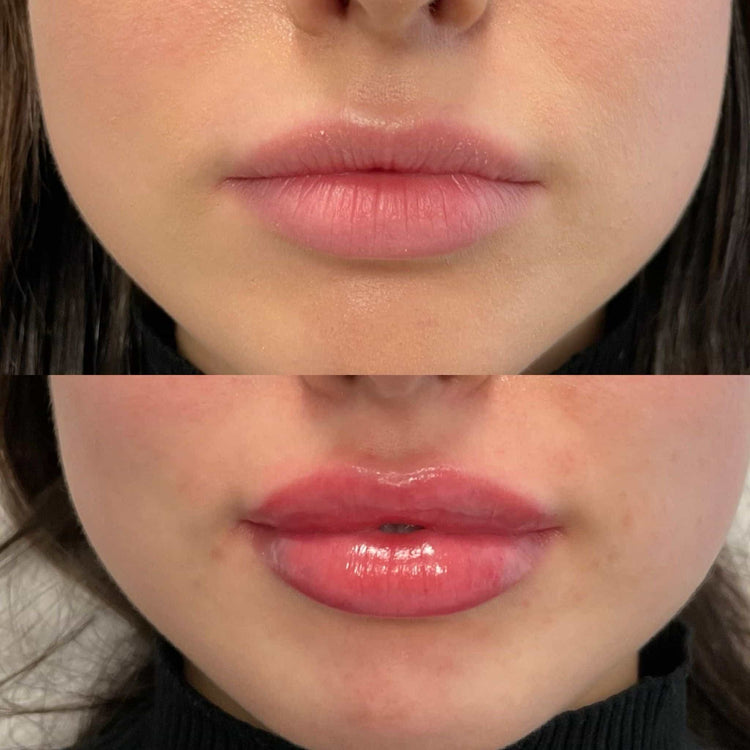Understanding Lip Anatomy
Lips play a crucial role in facial aesthetics, contributing to expressions, speech, and overall appearance. Understanding the anatomy of these delicate structures is essential for anyone seeking to enhance their lip symmetry and fullness through dermal fillers.
Muscles & Structure
The human lips are composed of several layers, including the skin, mucous membrane, muscle tissue, and underlying fat. The orbicularis oris muscle, a ring-shaped muscle surrounding the mouth, plays a key role in lip movement and expression.
Two main muscles contribute to lip shape: the levator labii superioris, which elevates the upper lip, and the depressor labii inferioris, which lowers the lower lip.
The underlying structure of the lips includes a framework of ligaments and connective tissues that provide support and maintain their shape.
Understanding these anatomical nuances is vital for achieving natural-looking results with dermal fillers.
Common Concerns Affecting Symmetry
Dermal fillers can effectively address various concerns affecting lip symmetry and fullness.
- Asymmetry: Fillers can be strategically injected to even out discrepancies in lip size or shape, creating a more balanced appearance.
- Thin Lips: Dermal fillers add volume to the lips, enhancing their fullness and definition. This can create a more youthful and attractive look.
- Lost Volume: With age, the lips naturally lose volume due to fat loss and collagen depletion. Fillers can restore lost volume, plumping up the lips and minimizing the appearance of fine lines.
Dermal Fillers for Lip Enhancement
Lips are a fundamental part of facial aesthetics, playing a crucial role in expressions, speech, and overall appearance. When seeking to enhance lip symmetry and fullness, understanding the anatomy of these delicate structures is essential for achieving natural-looking results.
Types of Fillers Used
Dermal fillers are an increasingly popular non-surgical option for enhancing lip symmetry and fullness. These injectable gels consist of hyaluronic acid, a naturally occurring substance in the body that attracts and retains moisture.
Various types of dermal fillers are used for lip augmentation, each with slightly different properties and results. Hyaluronic acid fillers such as Juvederm Ultra XC and Restylane Silk are commonly used for lips due to their ability to provide volume and hydration. These fillers are also known for being relatively safe and reversible if desired.
Other types of fillers, such as poly-L-lactic acid (PLLA) fillers like Sculptra Aesthetic, stimulate collagen production in the lips, gradually increasing volume over several sessions.
How Fillers Achieve Symmetry and Volume
Dermal fillers achieve symmetry and volume in the lips by strategically injecting hyaluronic acid gel beneath the skin.
- To correct asymmetry, a skilled injector will assess the shape of each lip individually and determine how much filler is needed on each side to create balance.
- For fullness, filler is injected into specific areas of the lips, such as the vermilion border (the red part of the lip), cupid’s bow (the indentation above the upper lip), or the body of the lip.
The Procedure: Achieving Desired Results
Dermal fillers have become a popular choice for individuals seeking to enhance their lip symmetry and fullness. These injectable gels, typically composed of hyaluronic acid, can effectively address various concerns related to lip shape and volume.

Consultation & Planning
The Procedure: Achieving Desired Results, Consultation & Planning is an important step in the process of using dermal fillers for lip enhancement. A thorough consultation with a qualified injector is essential to determine the best approach for each individual’s needs and goals.
During the consultation, the injector will assess the patient’s facial structure, lip symmetry, and any specific concerns they may have. Detailed discussions about desired outcomes, realistic expectations, and potential risks and benefits are also part of this consultation.
Based on the assessment, a personalized treatment plan is developed, outlining the type and amount of filler needed, injection points, and the expected results. This collaborative approach ensures that the patient understands the procedure and feels confident in their decision.
Injection Process
The injection process for dermal fillers typically involves several steps to ensure both precision and patient comfort.
Prior to the procedure, the area around the lips will be cleansed and a topical anesthetic may be applied to minimize any discomfort during injection.
The injector will then use a fine needle or cannula to carefully inject the hyaluronic acid gel into specific areas of the lips. The amount and placement of filler are determined based on the individual’s desired outcomes and facial anatomy.
After the injection, the area may be gently massaged to help distribute the filler evenly and minimize any bruising or swelling.
Aftercare Instructions
Following the procedure, aftercare instructions are crucial for optimal results and minimizing potential complications.
Patients are advised to avoid touching or rubbing their lips excessively during the initial healing period. Direct sun exposure should be minimized, and sunscreen with an SPF of 30 or higher should be applied diligently to protect the treated area from UV damage.
It’s important to stay hydrated by drinking plenty of water, as this aids in the absorption and distribution of the filler.
For the first few days after treatment, patients may experience some mild swelling, redness, or tenderness around the injection sites. These side effects are usually temporary and subside within a few days.
Over-the-counter pain relievers like ibuprofen can be taken to manage discomfort if needed.
Patients should avoid strenuous activity and limit facial expressions that may put pressure on the treated area during the initial healing phase.
Regular follow-up appointments with the injector are essential for monitoring the results and addressing any concerns.
Benefits of Filler Treatment for Lips
Dermal fillers offer a compelling solution for individuals seeking to enhance lip symmetry and fullness. These injectable gels, primarily composed of hyaluronic acid, effectively address a range of concerns, including asymmetry, thin lips, and lost volume associated with aging.
Increased Confidence
Dermal fillers are an increasingly popular non-surgical option for enhancing lip symmetry and fullness. These injectable gels consist of hyaluronic acid, a naturally occurring substance in the body that attracts and retains moisture.
- Asymmetry: Fillers can be strategically injected to even out discrepancies in lip size or shape, creating a more balanced appearance.
- Thin Lips: Dermal fillers add volume to the lips, enhancing their fullness and definition. This can create a more youthful and attractive look.
- Lost Volume: With age, the lips naturally lose volume due to fat loss and collagen depletion. Fillers can restore lost volume, plumping up the lips and minimizing the appearance of fine lines.
Lips are a fundamental part of facial aesthetics, playing a crucial role in expressions, speech, and overall appearance. When seeking to enhance lip symmetry and fullness, understanding the anatomy of these delicate structures is essential for achieving natural-looking results.
Dermal fillers achieve symmetry and volume in the lips by strategically injecting hyaluronic acid gel beneath the skin.
- To correct asymmetry, a skilled injector will assess the shape of each lip individually and determine how much filler is needed on each side to create balance.
- For fullness, filler is injected into specific areas of the lips, such as the vermilion border (the red part of the lip), cupid’s bow (the indentation above the upper lip), or the body of the lip.
Dermal fillers have become a popular choice for individuals seeking to enhance their lip symmetry and fullness. These injectable gels, typically composed of hyaluronic acid, can effectively address various concerns related to lip shape and volume.
The Procedure: Achieving Desired Results, Consultation & Planning is an important step in the process of using dermal fillers for lip enhancement. A thorough consultation with a qualified injector is essential to determine the best approach for each individual’s needs and goals.
During the consultation, the injector will assess the patient’s facial structure, lip symmetry, and any specific concerns they may have. Detailed discussions about desired outcomes, realistic expectations, and potential risks and benefits are also part of this consultation.
Based on the assessment, a personalized treatment plan is developed, outlining the type and amount of filler needed, injection points, and the expected results. This collaborative approach ensures that the patient understands the procedure and feels confident in their decision.
The injection process for dermal fillers typically involves several steps to ensure both precision and patient comfort.

Prior to the procedure, the area around the lips will be cleansed and a topical anesthetic may be applied to minimize any discomfort during injection.
The injector will then use a fine needle or cannula to carefully inject the hyaluronic acid gel into specific areas of the lips. The amount and placement of filler are determined based on the individual’s desired outcomes and facial anatomy.
After the injection, the area may be gently massaged to help distribute the filler evenly and minimize any bruising or swelling.
Following the procedure, aftercare instructions are crucial for optimal results and minimizing potential complications.
Patients are advised to avoid touching or rubbing their lips excessively during the initial healing period. Direct sun exposure should be minimized, and sunscreen with an SPF of 30 or higher should be applied diligently to protect the treated area from UV damage.
It’s important to stay hydrated by drinking plenty of water, as this aids in the absorption and distribution of the filler.
For the first few days after treatment, patients may experience some mild swelling, redness, or tenderness around the injection sites. These side effects are usually temporary and subside within a few days.
Over-the-counter pain relievers like ibuprofen can be taken to manage discomfort if needed.
Patients should avoid strenuous activity and limit facial expressions that may put pressure on the treated area during the initial healing phase.
Regular follow-up appointments with the injector are essential for monitoring the results and addressing any concerns.
Dermal fillers offer a compelling solution for individuals seeking to enhance lip symmetry and fullness. These injectable gels, primarily composed of hyaluronic acid, effectively address a range of concerns, including asymmetry, thin lips, and lost volume associated with aging.
Enhanced Facial Balance
Dermal fillers provide numerous benefits for enhancing lip symmetry and fullness.
- Enhanced Symmetry: Fillers can correct imbalances in lip size or shape, creating a more harmonious and balanced appearance.
- Increased Volume: Fillers add volume to the lips, plumping them up and restoring a youthful contour that may have been lost due to aging or genetics.
- Improved Definition: Fillers can enhance the definition of the lip borders, cupid’s bow, and other features, creating a more sculpted and refined look.
- Smoother Appearance: Fillers can minimize the appearance of fine lines and wrinkles around the lips, leading to a smoother and more youthful complexion.
Long-lasting Effects
Dermal fillers offer numerous benefits for enhancing lip symmetry and fullness.
- Enhanced Symmetry: Fillers can correct imbalances in lip size or shape, creating a more harmonious and balanced appearance.
- Increased Volume: Fillers add volume to the lips, plumping them up and restoring a youthful contour that may have been lost due to aging or genetics.
- Improved Definition: Fillers can enhance the definition of the lip borders, cupid’s bow, and other features, creating a more sculpted and refined look.
- Smoother Appearance: Fillers can minimize the appearance of fine lines and wrinkles around the lips, leading to a smoother and more youthful complexion.
These effects are typically long-lasting, with results often lasting for 6 to 18 months or longer, depending on the type of filler used and individual factors such as metabolism and lifestyle.
As the hyaluronic acid in dermal fillers gradually breaks down over time, the lips will naturally return to their pre-treatment appearance.
Repeat treatments are recommended to maintain the desired results.

Considerations and Risks
While dermal fillers offer a compelling approach to enhancing lip symmetry and fullness, it’s crucial to consider potential risks and complications associated with any cosmetic procedure.
Finding a Qualified Practitioner
Finding a qualified practitioner is paramount when considering dermal fillers. Look for a licensed physician, nurse practitioner, or dentist with extensive experience in administering facial fillers, particularly those specializing in lip augmentation. It’s essential to inquire about their training, qualifications, and the specific types of fillers they use.
Before proceeding with treatment, carefully discuss your desired outcomes, medical history, and any allergies you may have with your chosen practitioner. They should thoroughly assess your anatomy, facial structure, and skin type to determine the most suitable filler type, amount, and placement for your individual needs.
Risks associated with dermal fillers include temporary side effects such as swelling, redness, bruising, and tenderness at the injection sites. In rare cases, more serious complications may arise, including infection, allergic reactions, or asymmetry if the filler is not injected properly.
It’s important to have realistic expectations about the results of dermal fillers. While they can significantly enhance lip symmetry and fullness, they cannot completely transform facial features. Open communication with your practitioner throughout the process is essential for ensuring a safe and successful outcome.
Potential Side Effects
Considerations and Risks
While dermal fillers offer numerous benefits for enhancing lip symmetry and fullness, it’s crucial to consider potential risks and complications associated with any cosmetic procedure.
Finding a qualified practitioner is paramount when considering dermal fillers. Look for a licensed physician, nurse practitioner, or dentist with extensive experience in administering facial fillers, particularly those specializing in lip augmentation. It’s essential to inquire about their training, qualifications, and the specific types of fillers they use.
Before proceeding with treatment, carefully discuss your desired outcomes, medical history, and any allergies you may have with your chosen practitioner. They should thoroughly assess your anatomy, facial structure, and skin type to determine the most suitable filler type, amount, and placement for your individual needs.
Risks associated with dermal fillers include temporary side effects such as swelling, redness, bruising, and tenderness at the injection sites. In rare cases, more serious complications may arise, including infection, allergic reactions, or asymmetry if the filler is not injected properly.
It’s important to have realistic expectations about the results of dermal fillers. While they can significantly enhance lip symmetry and fullness, they cannot completely transform facial features. Open communication with your practitioner throughout the process is essential for ensuring a safe and successful outcome.
Potential Side Effects
Potential side effects of dermal filler injections are generally mild and temporary. They usually resolve within a few days to a week following the procedure. Some common side effects include:
* **Swelling:** This is a normal response to any injection and often peaks within 24-48 hours after treatment.
* **Redness:** Mild redness around the injection sites is expected but typically subsides within a few days.
* **Bruising:** Bruising may occur, especially if blood vessels are accidentally punctured during injection.
* **Tenderness:** The treated area might feel tender or sore for a few days.
Less common but more serious side effects, though rare, can include:
* **Infection:** Proper sterile technique and hygiene practices minimize the risk of infection, but it’s still possible.
* **Allergic Reaction:** Some individuals may experience an allergic reaction to the filler ingredients. Signs of an allergic reaction can include hives, itching, swelling, or difficulty breathing. Seek immediate medical attention if you suspect an allergic reaction.
* **Asymmetry:** If the filler is not injected evenly or correctly, it may result in asymmetry in lip shape. This often resolves with touch-up injections.
* **Vascular Occlusion:** In rare cases, a blood vessel can become blocked by the filler, leading to tissue damage. Prompt medical attention is crucial if you experience any signs of vascular occlusion, such as discoloration or numbness around the injection site.
It’s essential to discuss your medical history and any concerns with your chosen practitioner before undergoing dermal filler treatment to make an informed decision about the potential risks and benefits.
Learn more about the benefits of dermal fillers for your skin at It’s Me & You Clinic
- The Emotional Manipulation Of Gaslighting And How To Protect Yourself - June 7, 2025
- Kratom Energy Drinks: A Solution For Jet Lag And Travel Fatigue? - June 5, 2025
- Smokers Lines Lip & Mouth Fillers Near Ashford, Surrey - June 5, 2025

